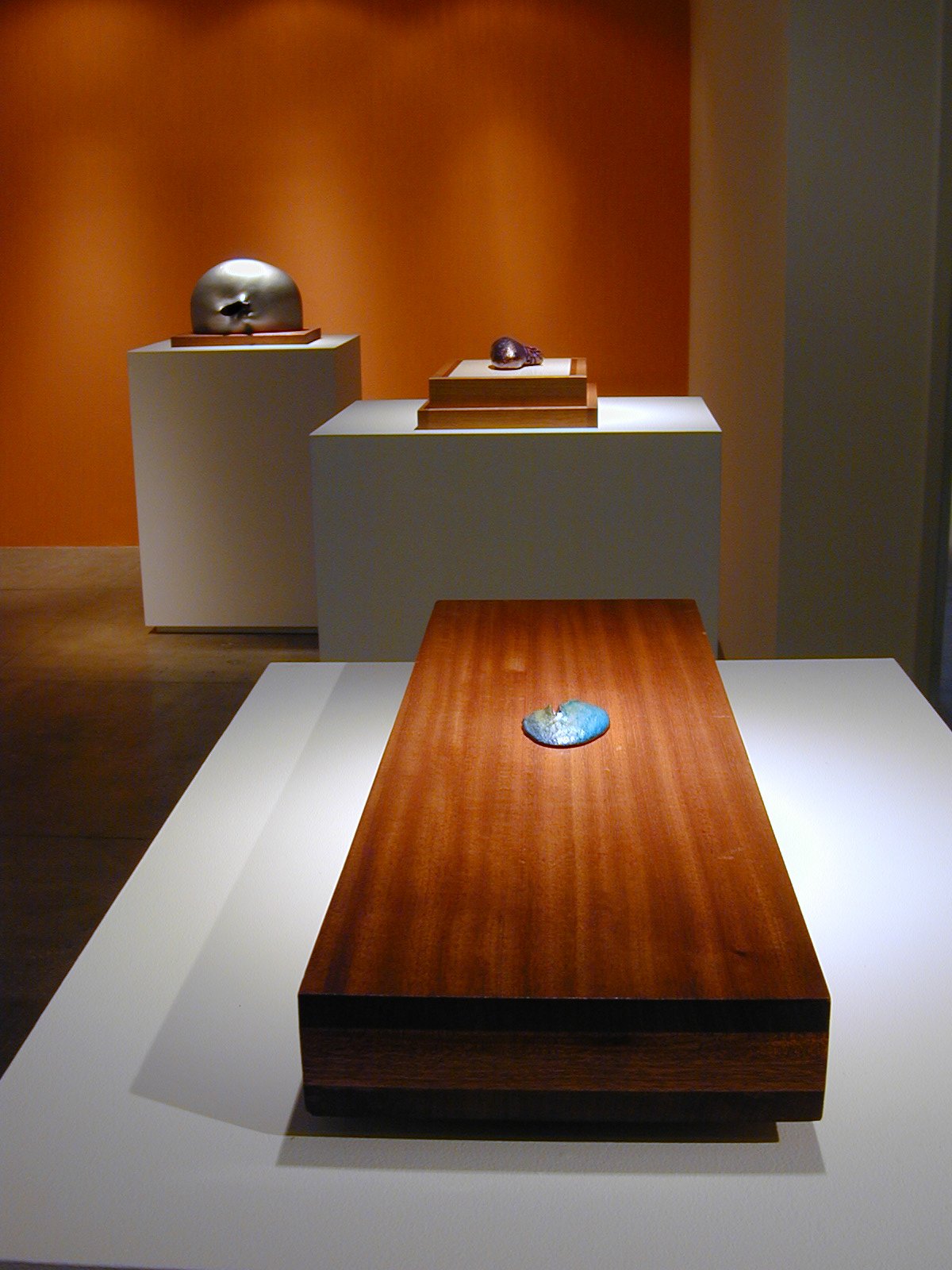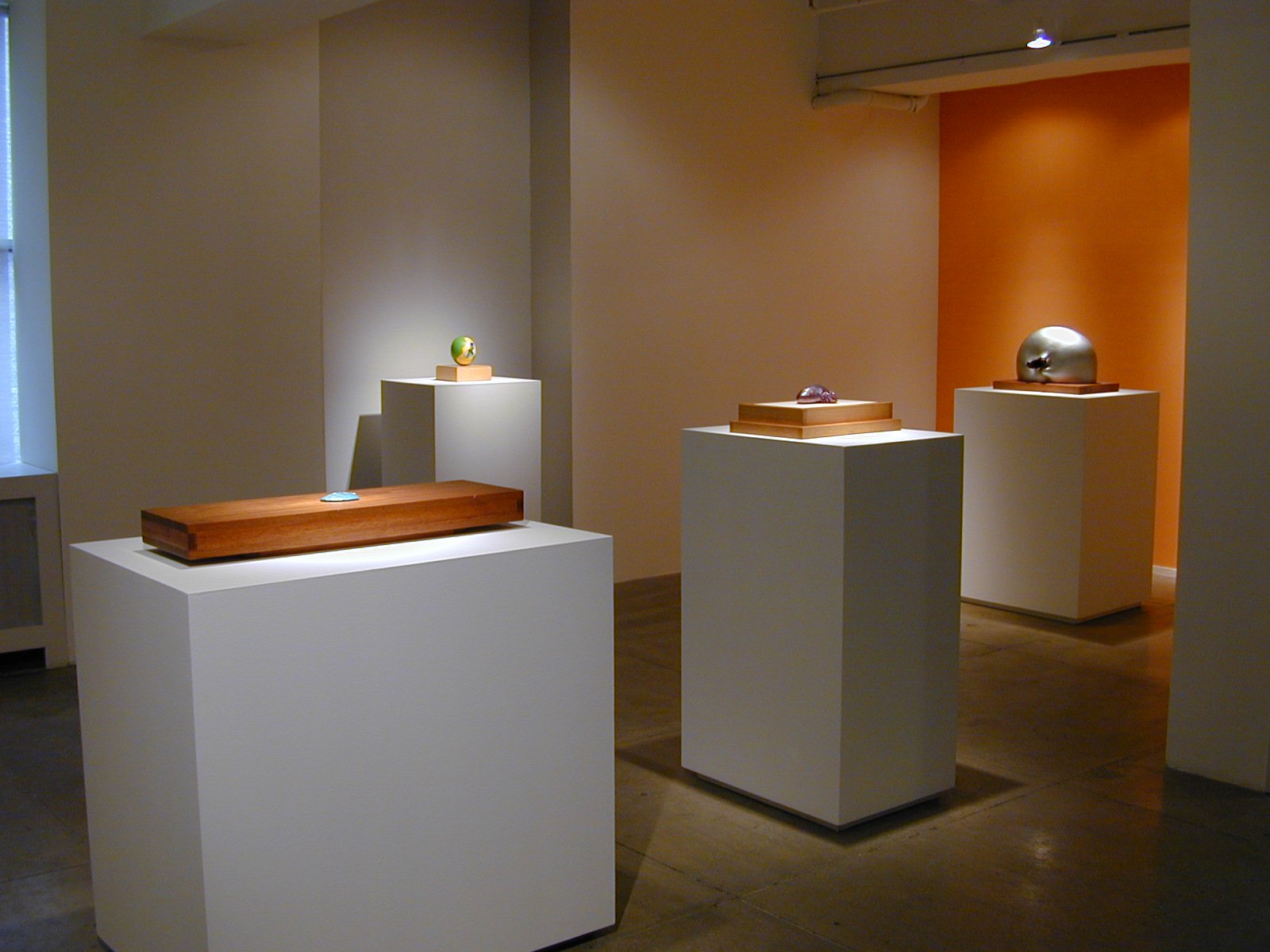Ken Price
Lumps, Bumps, Eggs and Specimens
April 28 - May 20, 2000
In 1960, Ken Price first exhibited his eccentric mound and egg shaped ceramic objects at the Ferus Gallery in Los Angeles. These sensual little objects with surfaces that included everything from low-fired glazes to auto enamel to opalescent acrylics, gained Price (then in his early twenties) immediate recognition as an artist’s artist. Throughout the early to mid-sixties, Price continued producing and exhibiting ostensibly separate bodies of works based on consistent themes. Though theses amorphous bumps, blob-like mounds, and palm-sized biomorphic forms displayed upon elaborately constructed platforms, appear distinct, they were in fact conceived as related works. It was not until 1966 however, in the context of a two-person show with Robert Irwin at the Los Angeles County Museum of Art, that these objects were exhibited collectively. “Lumps, Bumps, Eggs and Specimens” is an overview of Price’s sculptural (i.e. non-vessel) work’s produced during this period.
Perhaps more than with any other series of Price’s career these works straddle a narrow precipice separating the elegant from the abhorrent, and the graceful from the crude. Sexual and scatological associations are inevitable reactions to the bulbous protrusions of the eggs and globular asymmetry of the lumps and bumps. In Specimen CJ1303 a strangely shriveled glistening form rests upon a cushioned base like a prize winning biological experiment from a post-war science fair. These works now seem particularly prescient in the context of similar themes recently addressed in the works of a number of younger L.A. artists many of whom attribute Price as an influence.
The catalogue which accompanied the aforementioned LACMA exhibition included an essay by Lucy Lippard that could aptly lend itself to approaching the works in this current show. At the conclusion of her essay Lippard states:
As Price’s sculpture becomes less and less ingratiating, it acquires a beautiful and rather horrible strangeness that appeals both to the mind and the senses. With his unique approach to polychromy and to small, low-slung forms, he is in the process of discovering one alternative to the restrictions of conventional sculpture.
Now with nearly 35 years of hindsight, Lippard’s comments remain appropriate.





